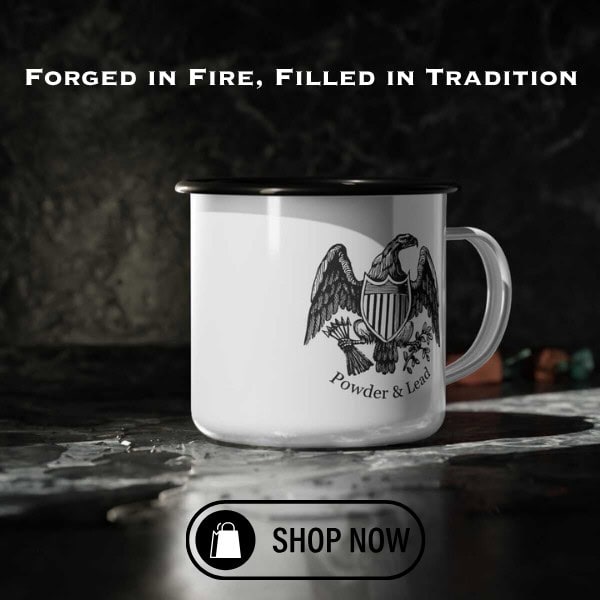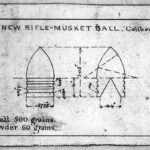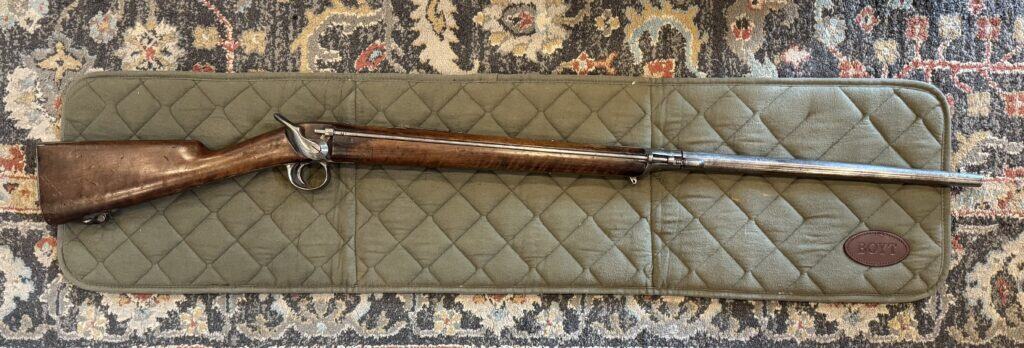
Origins of the Enfield Pattern 1853
The Enfield Pattern 1853, commonly known as the P53 Enfield, is one of the most historically significant rifles of the 19th century. Developed as part of the British Army’s transition from smoothbore muskets to rifled firearms, this .577 caliber muzzle-loading rifle revolutionized infantry tactics and saw extensive use in conflicts worldwide.
By the mid-19th century, the limitations of smoothbore muskets had become evident. The British Army sought to replace its aging Brown Bess musket with a rifled weapon that offered greater range, accuracy, and stopping power. The development of the Pattern 1851 Minié Rifle, an early rifled musket firing the Minié ball, provided valuable insights that culminated in the Pattern 1853 Enfield Rifle-Musket.
The Royal Small Arms Factory (RSAF) in Enfield, located in North London, played a pivotal role in its production, but other manufacturers, including Birmingham Small Arms Trade (B.S.A.T.) and private contractors, also contributed to large-scale production. The rifle underwent rigorous military testing before being officially adopted by the British Army in 1853, leading to its widespread use across the British Empire and beyond.
Historical Significance and Adoption
The Enfield P53 rifle holds historical importance not just as Britain’s first widely standardized rifled musket, but also due to its impact on military tactics. Its adoption signaled the decline of tight infantry formations, which had been necessary for smoothbore musket warfare. The increased accuracy and range of the P53 Enfield meant that soldiers could engage enemies at distances exceeding 600 yards, compared to the Brown Bess’s effective range of only 100 yards.
The rifle was first deployed in combat during the Crimean War (1853-1856), where it demonstrated its effectiveness against Russian forces. However, its most infamous role came during the Indian Rebellion of 1857, when rumors spread among Indian sepoys that the cartridge grease was derived from beef and pork fat—a serious offense to both Hindus and Muslims. This controversy was one of the catalysts of the rebellion, which profoundly reshaped British colonial rule in India.
The rifle was also extensively used in the American Civil War (1861-1865). Both the Union Army and Confederate forces relied heavily on imported Enfields, making it the second most commonly used rifle of the war after the Springfield Model 1861. The Confederacy imported between 250,000 and 400,000 Enfield rifles, with many arriving via British arms dealers. Its superior accuracy and stopping power made it a preferred weapon among sharpshooters and regular infantry alike.
Even after newer breech-loading rifles like the Martini-Henry (1871) were introduced, the P53 Enfield remained in service in colonial conflicts, including the Zulu War of 1879, where some auxiliary units still used it despite the Martini-Henry being the standard rifle.
Technical Specifications and Ammunition
One of the defining features of the P53 Enfield was its use of the Minié ball, an innovation that significantly enhanced rifled musket performance. Below are the key technical details of the rifle:
Specifications:
- Caliber: .577 (14.7mm)
- Barrel Length: 39 inches
- Overall Length: 55 inches
- Weight: 9.5 lbs (unloaded)
- Rifling: Three-groove progressive-depth rifling
- Effective Range: Up to 600 yards (volley fire up to 1,250 yards)
- Muzzle Velocity: Approximately 850-900 feet per second
Ammunition and Loading Procedure:
The P53 Enfield used a pre-packaged paper cartridge, which contained:
- A .568-inch lead Minié ball, lubricated with a mix of beeswax and tallow.
- A charge of 65-70 grains of black powder.
- A paper wrapper that doubled as wadding for a proper gas seal.
To load the rifle, soldiers followed these steps:
- Tear open the cartridge with their teeth.
- Pour the gunpowder down the barrel.
- Insert the Minié ball and use the ramrod to push it into place.
- Place a percussion cap on the nipple to ignite the charge.
- Fire and repeat, with a well-trained soldier achieving up to three rounds per minute.
The Minié ball design allowed for expansion upon firing, gripping the rifling and increasing both accuracy and range. This made the P53 vastly superior to older smoothbore muskets in terms of precision.
Combat Effectiveness and Influence on Warfare
The P53 Enfield rifle-musket transformed military strategy by extending battlefield engagement distances. It forced armies to adopt looser formations and rethink traditional tactics:
- Accuracy: The Minié ball and rifling combination allowed soldiers to engage targets at distances previously unimaginable.
- Stopping Power: The .577 caliber Minié ball caused devastating wounds, often shattering bones upon impact.
- Volley Fire Efficiency: British tactics included coordinated volley fire, maximizing the rifle’s long-range capabilities.
It directly influenced the development of breech-loading rifles, such as the Snider-Enfield (1866), which converted many P53 Enfields into breech-loaders, extending their service life well into the 1870s.
The P53 Enfield in the American Civil War
The American Civil War saw widespread use of the P53 by both Union and Confederate forces. The Confederacy, lacking domestic manufacturing capabilities, relied heavily on British imports, with many of these rifles smuggled through Union naval blockades.
Key Battles Featuring the P53 Enfield:
- Battle of Antietam (1862) – One of the bloodiest days in American history, where both sides used Enfields.
- Battle of Gettysburg (1863) – Confederate forces under Robert E. Lee relied heavily on Enfields during this pivotal battle.
- Battle of Chickamauga (1863) – Both Union and Confederate troops wielded Enfields in a critical Southern victory.
Legacy and Conclusion
The Enfield Pattern 1853 was far more than just a rifle—it was a turning point in military history. As one of the most widely used rifles of the mid-19th century, it influenced the design of later firearms and played a critical role in shaping modern warfare. Its service across multiple continents and conflicts cemented its legacy as one of the most important military arms of its time.
Today, the P53 Enfield remains highly valued by collectors, and its impact is still studied by military historians. Whether in the hands of British redcoats, Confederate infantry, or Indian sepoys, the Enfield rifle left a lasting mark on the world.
Discussions on Enfield Rifles can be found here.
Read more about the Enfield P1853 here:


If you know of any forums or sites that should be referenced on this listing, please let us know here.




